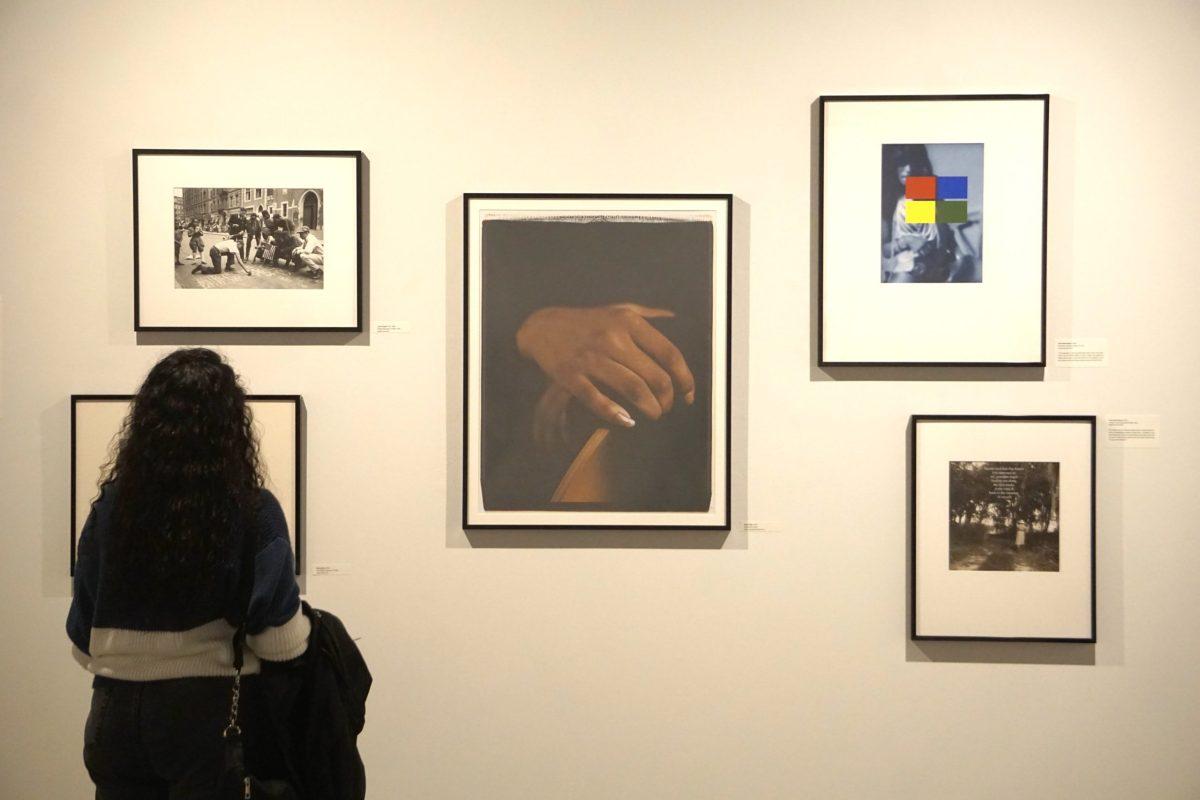The Contexts & Communities art exhibition, open at SP/N from Jan. 26 to March 2, includes a large archive of photographs that create a nostalgic feeling in viewers by centering themes of community and familial bonds.
The exhibition features photographs from the Comer Collection, which was created by retired engineer Jerry Comer. Curator and PhD student Rebecca Cai picked the exhibition’s current theme — Contexts & Communities — and selected all relevant photographs from the collection. Cai included text descriptions next to each piece of artwork to tell its story and show its place in the exhibition.
Comer gave his collection to UTD in 2010, giving an opportunity each year for PhD students to curate an exhibition by selecting a subset of its photos based on a central theme. As a serious amateur photographer who has won eight Best in Show awards from the State Fair of Texas and the city of Richardson, Comer said he acquires photographs mainly through the photography auctions held at Heritage Auctions.
“I’ve been collecting photos for a long time,” Comer said. “I had some that were quite valuable that were just under a bed, and it concerned me that when we will be away from the house on vacation or something, that if there was a fire, they’d be destroyed. So I gave them to UTD.”
Having to choose from many photos in the Comer Collection, Cai said she was interested in the idea of communities, as they depict a wide range of subjects. The exhibition contains photos of social networks including families and neighborhoods and focuses on the importance of human connection.
“Context and communities can mean different things,” Cai said. “[Internal contexts] can mean [how] the photo is cropped so some have a wider frame, so it may have a different effect [on the audience]. External context [such as] captions or labels are being used to talk about these people [in the photos], and how all these things are kind of connected.”
Cai brought out the importance of these social connections in the exhibit by placing together photographers who knew each other in real life. For example, photographer Dorothea Lange is placed next to Marion Post Wolcott, both of whom were a part of the Farm Security Administration, or FSA, an agency founded during the Great Depression to document and alleviate rural poverty in the U.S. Other artists groupings center around members of the Photo League — a New York co-op that documents social causes — as well as the Magnum Photographers — an international co-op founded in the 1940s.
The main image in the exhibition is a photograph by Bill McDowell, who is also a part of FSA, called “Diptych.” Cai said this image is the starting point for the exhibition since the story behind the picture is a recontextualization of photographic meaning. According to the Context & Communities pamphlet, FSA’s goal was to promote the New Deal and help communities displaced in the Dust Bowl. “Diptych” consists of two photographs placed side by side: Mr. Tronson, Farmer Near Wheelock ND from Russel Lee in 1936 and Detail of Untitled, Alabama from Walker Evans in 1936. Both photographs have black holes punched in them, as the FSA director deliberately damaged 100,000 out of the 270,000 negatives in an attempt to keep them from being published.
The hole-punched pictures have been recontextualized and now represent a new meaning through their new display. According to the Context & Communities pamphlet, “the black holes can be perceived as an abstraction and re-imagined to be circular portals that connect the view to post-Depression America.” Gallery Manager Brian Scott said that his personal favorite picture in the exhibition is “Diptych.”
“[Diptych] is a collaboration over time,” Scott said. “The photographer went out and took these pictures, the editor hated them, punched a hole through them and a person who printed these did this [and] those are three different points in time, not related to each other, where this piece was built. It’s also like evolution in your life. These things change over time. They’re affected by other things, but it’s not a conscious effect.”
The photograph “Migrant Mother” by Dorothea Lange explores the theme of home, showing a displaced mother who has worked hard to support her children despite being burdened by the struggles of everyday life. According to Cai, this photo shows how photography has been used to garner public support through government aid programs by depicting conditions of poverty.
“I was hoping that the [audience] would walk away with the feeling that they were able to find some photos they were able to connect with,” Cai said. “I was [also] hoping the text portions [in the exhibition] provided an educational component where they were able to see the beginning of photography and hopefully, they will get a sense that photographers are working in dangerous situations and the shift between the past and contemporary photography.”





